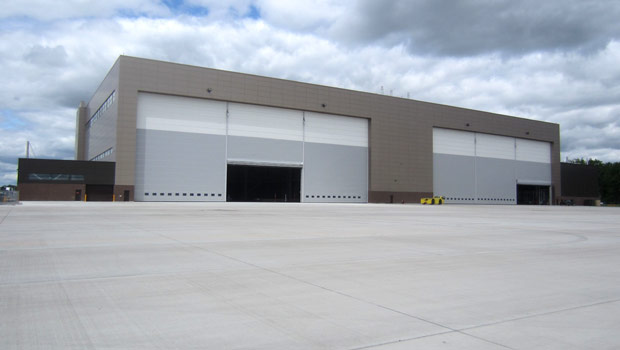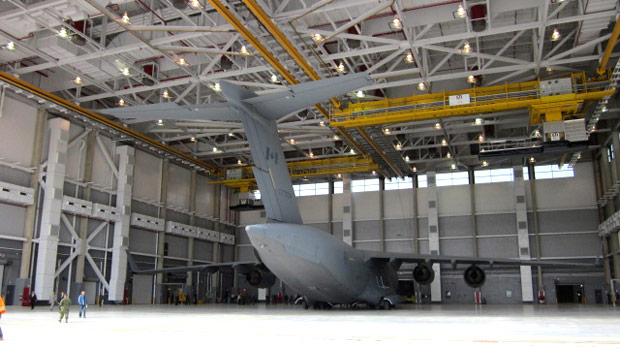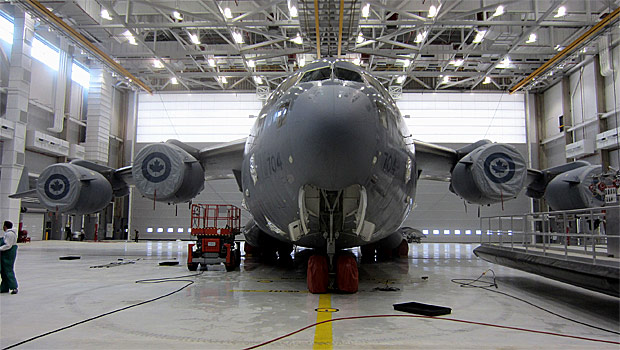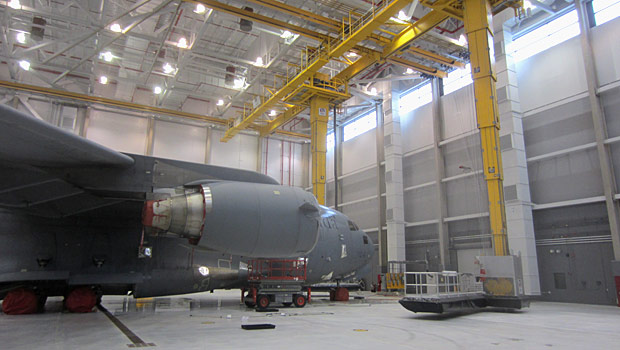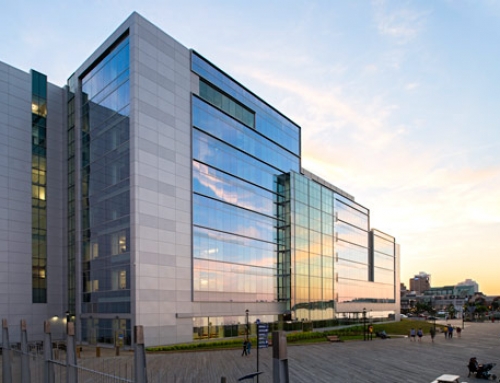Project Description
The Department of National Defence’s (Canada) Maintenance Hangar 1 at Canadian Forces Base (CFB) Trenton, Ontario, are hangar facilities for the maintenance of the Air Force’s newly acquired fleet of C-17 Globemaster III transport aircraft. Existing hangar facilities at CFB Trenton were not large enough or suitable to perform routine maintenance work and Home Station checks on the C-17. Completed in April 2012, the facility is now capable of providing maintenance to the fleet of four C-17s. The first Home Station Check for the C-17 at CFB Trenton was performed earlier this month. Providing this capability has had a tremendous impact on flight operations. Prior to this capability, the air and maintenance crews were required to be off-site for 12 days out of every month.
Maintenance Hangar 1 is a two-bay Corrosion Control and Fuel Cell Maintenance Hangar that was planned and designed on a fast-track schedule starting in 2008. The 22,700 m2 (gross) facility is located on a 60,000 m2 site on the North side of CFB Trenton and has a building footprint of 18,500 m2. Hangar 1 is a state-of-the-art facility which uses approximately 4,000 tonnes of structural steel and is considered to be the largest single-building construction project for the Canadian Forces, anywhere in the world. Structural steel was the preferred choice of construction material for the Hangar 1 primary structural framing system. The choice of steel provided numerous benefits to the project as compared to other materials.
The Hangar 1 facility features two maintenance bays complete with support shop and administration areas, a sloped hangar steel roof to allow for drainage, two 60-m long x 23-m high vertical lift fabric hangar bay doors supported from roof trusses. Other significant features include two moveable/telescoping work platforms supported by roof trusses, weighing approximately 55,000 kg each, in the one hangar bay, and a five-tonne overhead steel-rail-mounted crane in the other hangar bay. The two roof supported telescoping work platforms installed on this project are the only platforms of their type known to exist in Canada. Both hangar bays have an extensive network of overhead fall-arrest tracks that allows safe work access to the various aircraft mentioned previously.
Hangar 1 was designed to limit the physical effects on the surrounding environment. It integrates reflective roofing material that is meant to help reduce the heat island effect, which creates a hot microclimate, as a result of heat absorbing materials. The site also utilizes a storm water runoff management pond to reduce overload on municipal systems. The building’s integrated lighting was designed to minimize light trespass from the site, reduce sky glow, improve night time visibility through glare reduction and reduce the development impact on nocturnal environments. The building includes a rainwater harvesting system (20,000 L cistern), low flow fixtures and xeriscaping in order to reduce potable water use and water consumption. Also incorporated in the design, a wash water recycling system was installed to reduce water consumption. This system stores, processes and reuses plane wash water.
Project Team
Owner: Department of National Defence
Architect: Kasian Architecture Interior Design & Planning Ltd
Structural Engineer: SNC Lavalin Inc.
Fabricator: Burnco Manufacturing INC.

